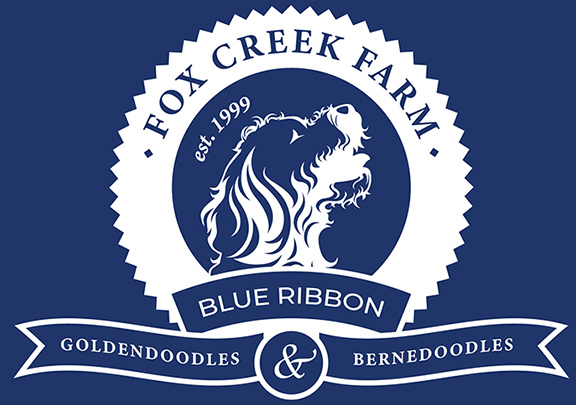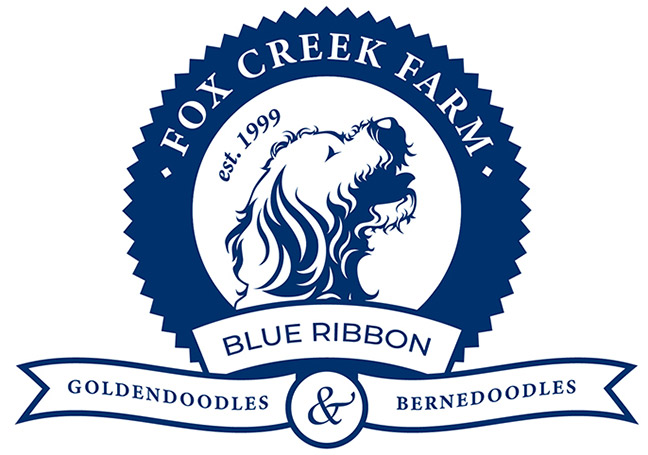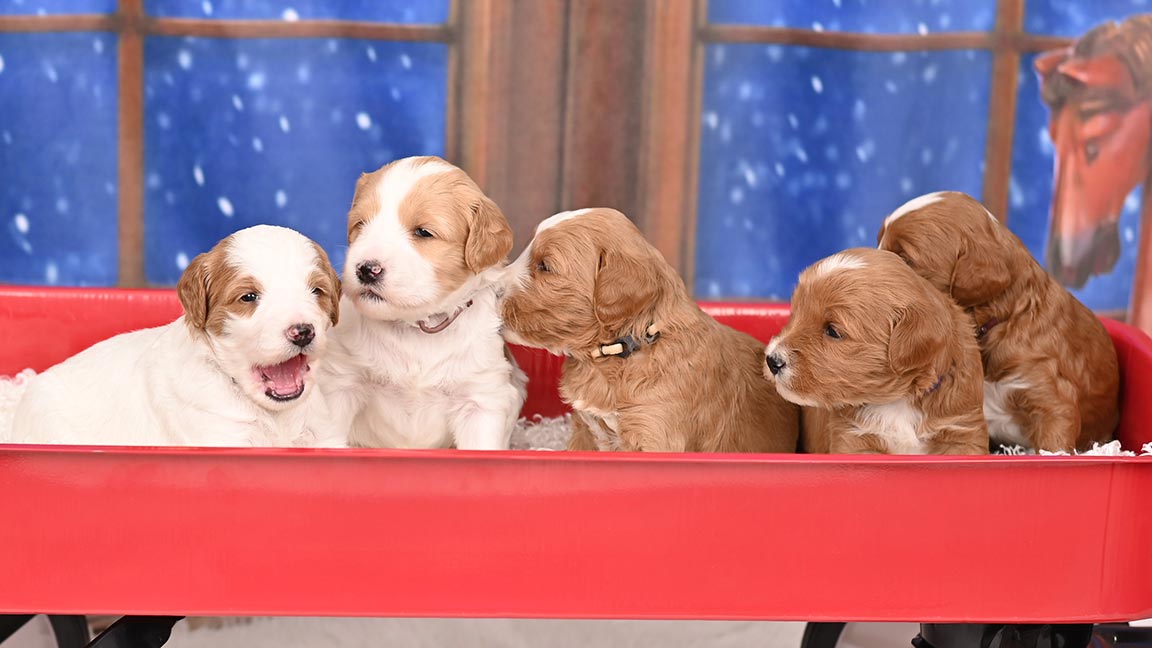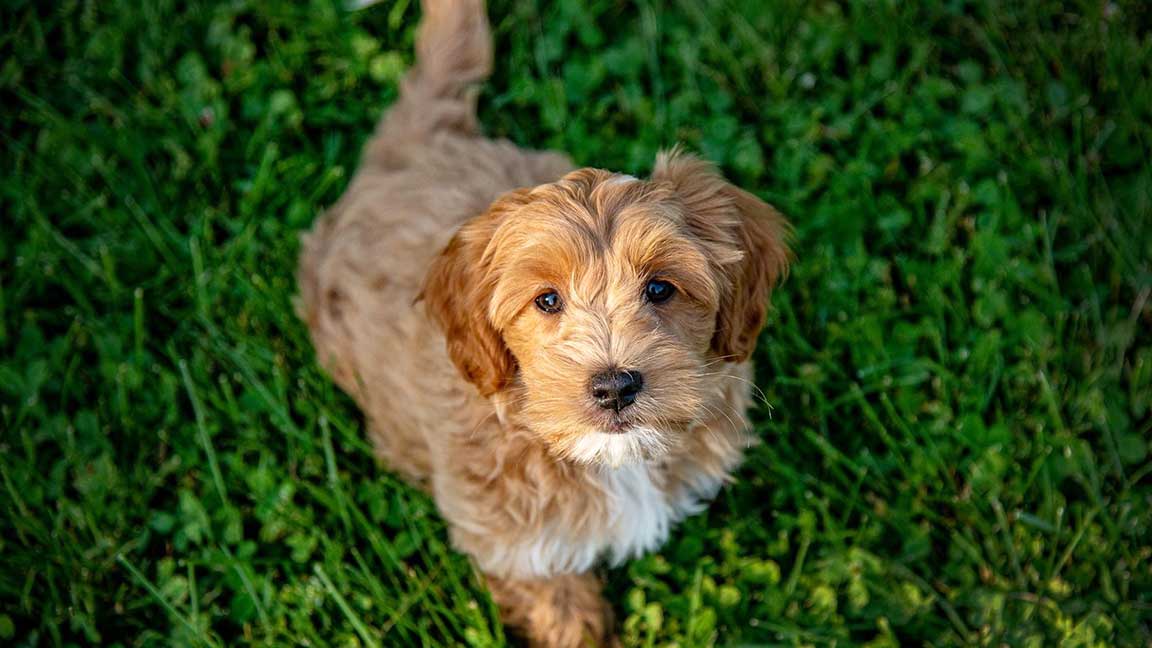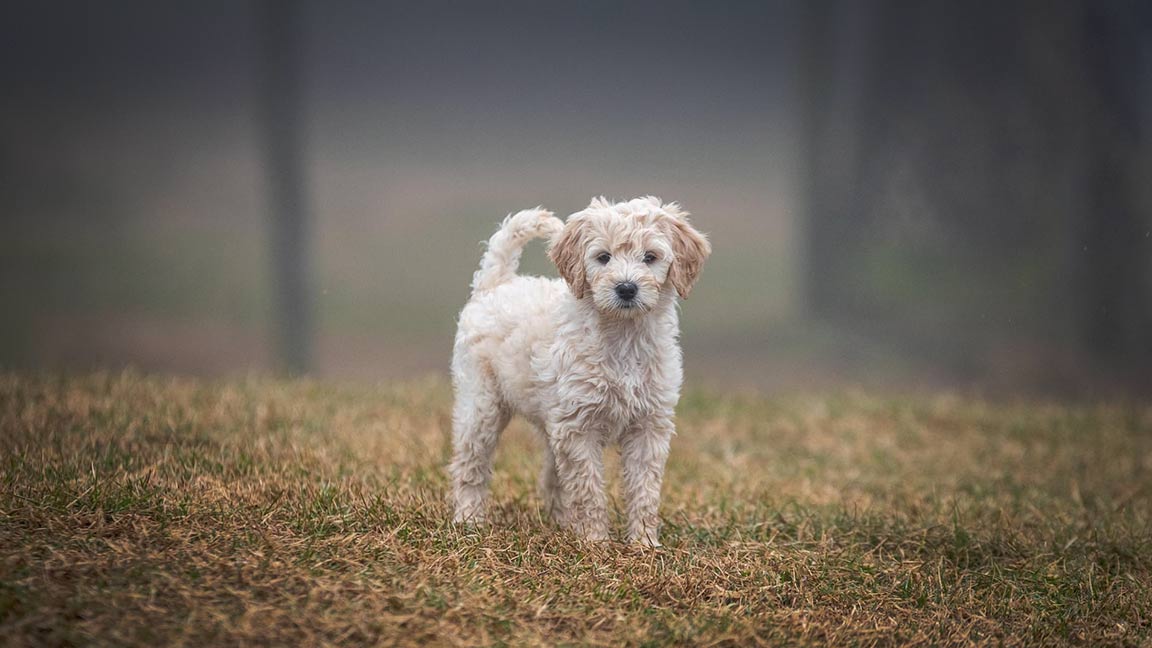
Are All Goldendoodles Hypoallergenic?
Living with a dog is something everyone should experience. You envision becoming a fur parent to a Goldendoodle puppy, having a best friend, never being alone, and having a reason to get out and walk for some much-needed exercise. You dream of watching your kids learn about responsibility and compassion, and seeing them grow up with a canine sibling that will be a fond memory for life. But what happens when you bring home this little bundle of fur only to realize a member of your household’s allergies just went into pet dander overdrive?
Not only is it important when searching for a breed of dog that has the right temperament and exercise requirements for your lifestyle, but it is also equally important to determine if all the members of your family can tolerate the allergens a dog adds to the house. If you will be a first-time dog owner or you have added a child to your family since your last dog was around, it is important to do some easy testing to determine if adding a dog is a possibility.
Any family member that is unsure about their compatibility with a dog due to allergies needs to visit with dog-owning friends. These visits should be indoors where their dog lives and allergens are at their highest concentration. Petting the dog, rubbing your hands on your face, and even allowing the dog to lick your hands are good first steps in determining your level of reaction to interacting with a dog. Document your reactions as well as the breed of dog, whether or not he sheds, and if you were licked and where. This information will help you determine if you are allergic only to dogs with specific traits. You may find that you are only allergic to shedding dogs or to saliva when licked, and if so, this opens the door to finding an appropriate non-shedding dog with which to share your space.
Potential Reasons for Your Allergy Symptoms
The culprit? The protein in a dog’s saliva, urine, skin (i.e. pet dander, which is dead flakes of skin cells), and other allergens that stick to a dog’s fur, such as dust mites, mold, and pollen are all possible reasons for an allergic reaction. All these contribute to the allergies you suffer when you give a dog some petting and cuddles. Those with severe allergies may be allergic to all of the above, while others may only have a noted allergic response when they were licked by a dog. When a dog sheds hair, dander attached to the hair follicle is released. Therefore, dogs that do not shed produce much less dander. Those allergic to saliva can avoid allowing a dog to lick them, so that is the easier of the issues to conquer. Wiping the paws and belly of your dog with cleansing wipes when he comes in from outside will help reduce reactions to things such as pollen.
How Do Dog Allergies Manifest?
Dog allergies usually come in the form of an itchy throat, watery eyes, and possibly skin hives. The symptoms will depend on your level of allergies and could even cause an asthmatic response for some.
What Does Being Hypoallergenic Mean?
In reality, there is no such thing as a hypoallergenic dog as some people are allergic to all dogs no matter what. When we refer to being a hypoallergenic dog or breed, this just means it has less chance of triggering an allergic response. Non-shedding dogs produce less dander and less dander means fewer allergens left on the rugs, furniture, and clothes, and floating in the air. Therefore, families with allergy concerns have a much better chance of compatibility with a dog that does not shed.
So Back To “Are All Goldendoodles Hypoallergenic”?
The correct answer to this question is no, they are not. Not all Goldendoodles are created equal when it comes to be non-shedding. A Goldendoodle must inherit two furnishing genes to have a non-shedding coat. This can happen by chance, but it is much easier to achieve using DNA and selective breeding. Certain generations of Goldendoodles cannot inherit two furnishing genes, and therefore, will be mild to moderate shedders removing them from the list of possible candidates for those who suffer from mild to moderate allergies.
What Goldendoodle Generations are Non-Shedding?
F1 Goldendoodles are the product of crossing a Poodle and a Golden Retriever. The ‘F’ stands for ‘filial’ indicating that the dog has parents of two different breeds. Offspring inherit one gene from each parent for each trait. Because Golden Retrievers carry zero furnishing genes and Poodles carry two, all F1 Goldendoodles will inherit just one furnishing gene. Furnishing genes are not only responsible for whether or not a dog sheds, they are responsible for producing long hair on the muzzle of dogs. This gene is dominant meaning it will be expressed when its beneficiary only inherits one copy and this is why F1 Goldendoodles have fluffy facial hair. However, the lack of the second gene means F1 Goldendoodles will still shed some. The amount of shedding though will be less than that of a Golden Retriever who carries zero furnishing genes.
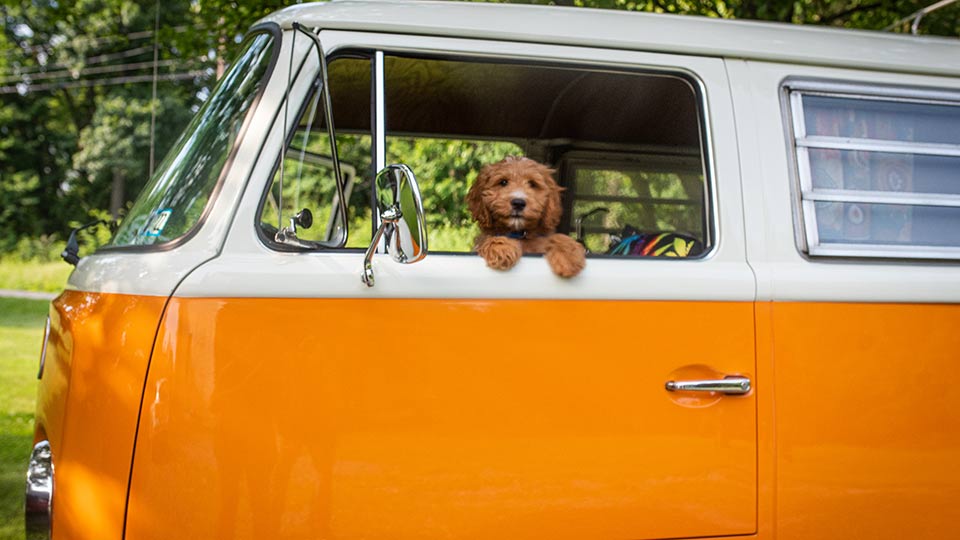
The Significance of Goldendoodle Generations as It Pertains to Shedding
It is impossible to have an F1 Goldendoodle that carries two furnishing genes. When creating the next generation of Goldendoodles, one can cross two F1s or an F1 Goldendoodle back to one of the parent breeds. These generations are the F2 and the F1B respectively. The “B” indicates the backcrossing to an original breed. The chart below will explain generations. Note the F1B generation that could have a Golden Retriever parent as it will provide no offspring with two furnishing genes and approximately half of the offspring with zero furnishing genes.
- F1 Goldendoodle (First generation) = Poodle + Golden Retriever
- F1b Goldendoodle (Backcross) = F1 Goldendoodle + Poodle or Golden Retriever
- F2 Goldendoodle (Second Generation) = F1 Goldendoodle + F1 Goldendoodle
- F2b Goldendoodle (Backcross) = F2 Goldendoodle + Poodle or Golden Retriever
- Multigenerational = Two Goldendoodle parents – One parent has to be an F1B or multigen. A Poodle or a Golden Retriever bred to a multigen Goldendoodle also constitutes a multigen.
In all these generations beyond the F1 Goldendoodle, it is possible to have offspring with zero, one, or two furnishing genes. For a breeder to produce entire litters that each carry two furnishing genes, DNA testing on the parents is required. If both parents carry two furnishing genes, then all offspring will inherit two furnishing genes. If one parent carries two genes and one parent carries one gene (as in producing the F1B generation by crossing an F1 with a Poodle), statistically only half the litter will inherit two furnishing genes. This debunks the myth floating around that an F1B is the most likely generation to be non-shedding. A properly bred multigen Goldendoodle litter is the first generation that can produce 100% of the puppies who carry two furnishing genes. However, just because a litter is a multigen litter does not mean all the puppies will carry two furnishing genes and be non-shedding. It is quite possible to create a multigen Goldendoodle that carries zero furnishing genes and this is known as a flat-coated Goldendoodle. These Goldendoodles typically will be moderate to high-shedding dogs.
Desensitizing Allergic Reactions
Many people go the route of getting allergy shots from their allergy specialists to help reduce the symptoms they experience when coming in contact with something that causes a reaction. For most, this is a viable option. Others use the exposure method and become desensitized over several months of constant contact with the allergen (the dog in this case). As long as the symptoms are not severe such as an asthmatic event, symptoms will slowly diminish over time just as they would from the result of allergy shots.
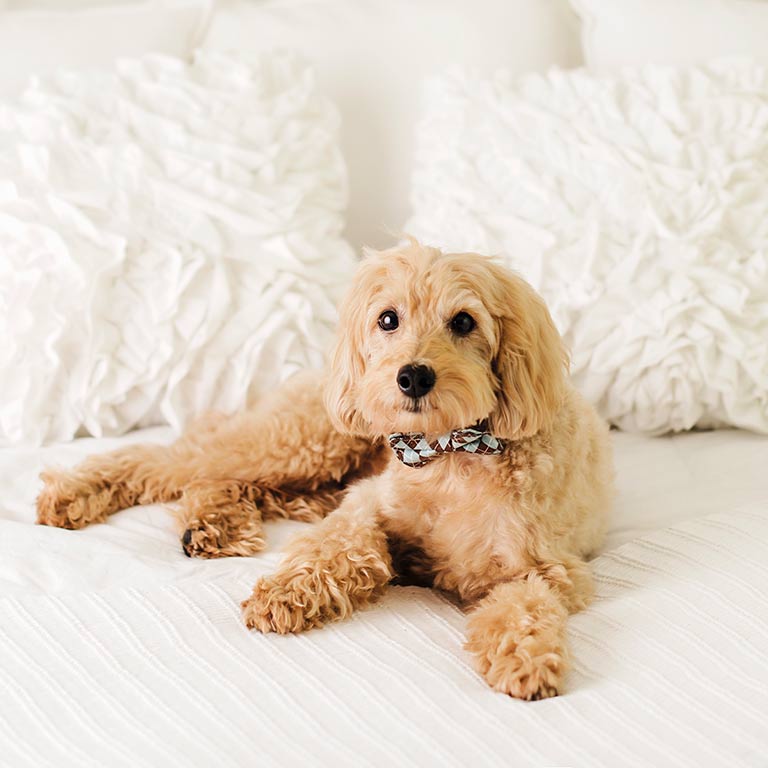
Tips for Controlling Pet Allergens
If you’ve made it this far, it is likely you already have your heart set on adopting a hypoallergenic Goldendoodle, or at least, one as close to hypoallergenic as possible. You already know that controlling pet allergens is possible and you are ready to accept the challenges of conquering the allergic response so you can enjoy close interactions with your Goldendoodle.
Here are a few things that are within your capacity to do to keep your allergies at bay:
- Bathe dogs regularly. Your Goldendoodle will bring in allergens from outside. Bathing them often will help remove the pollen, dust, grass, etc. that can come in attached to the coat. You can also take them to professional groomers and have that task completed by someone that is not allergic to dogs. Bathing regularly with a mild shampoo with moisturizers is recommended.
- Brush them regularly. The hairs that would be left around the house or on your clothes and furniture can be greatly reduced by regular brushing. This helps to capture the hairs in the brush eliminating them from floating around the house.
- Keep them off the couch and your bed. Giving yourself a place to relax that is allergy friendly is important. If a particular family member has a dog allergy, keep their bedroom door closed and have the dog sleep somewhere else at night. Keeping an allergy-friendly place available will allow the allergic person to have a space where they can escape the allergens.
- Vacuum often. Removing allergens that can become airborne or tracked around the house will help contain the allergens that cause a reaction.
- Replace the carpet with hardwood floors. Dog hair can become embedded in carpeting making it difficult to remove them all. Hardwood/laminate/tile floors are much easier to keep allergy friendly.
- Do not allow your dog to lick you. As much as you want your Goldendoodle to shower you with kisses, this might be detrimental to your relationship if you suffer from allergies.
The Most Important Tip of All
Work with an experienced Goldendoodle breeder who DNA tests all parent dogs. A breeder who tests and understands the results of these tests can produce non-shedding litters that are appropriate for those with mild to even moderate dog allergies. Taking a chance on accepting a puppy that may or may not carry two furnishing genes increases the odds that the puppy may not be compatible with all the family members who wish to enjoy the close companionship a loving Goldendoodle can provide.
